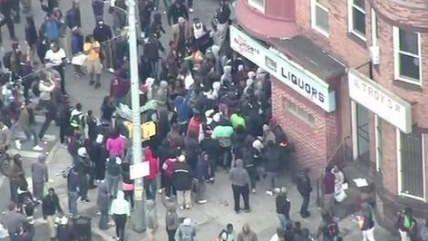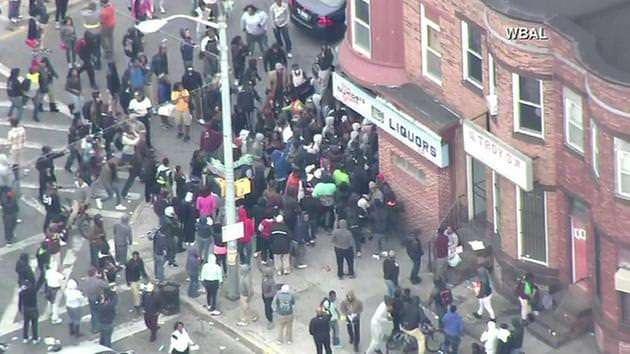Riots in Baltimore: What Is Seen and Unseen
The city has been on a slow burn for years.


Looting, throwing rocks, and torching cars and buildings in one's own community is a stupid, self-destructive way to deal with problems. The violence in Baltimore was harmful to police, at least 15 of whom were hurt, but even more harmful to the people who live and work where it occurred. An area that was poor and dangerous is only likely to get worse.
Flames consumed a $16 million senior housing project and community center that was under construction, which won't come to pass on time, if ever. Some businesses will leave, and others will stay away. Whoever will suffer as a result, it won't be the people the rioters are mad at.
But riots don't happen in vacuums. This one followed peaceful protests by residents aggrieved by the shocking death of a black man in police custody. Freddie Gray made the mistake of running at the sight of police and, after being caught, ended up with a nearly severed spinal cord.
Outside the 1968 Democratic National Convention, Chicago police fought antiwar protesters in a melee that left many injured, more arrested and others appalled. A federal commission later labeled the episode a "police riot." The cops, it said, had used "indiscriminate and unrestrained" force, sometimes on "persons who had broken no law, disobeyed no order, made no threat."
The Baltimore police had taken part in a riot of their own—not a sudden explosion of violence, but a bloody slow-motion event that largely escaped public notice. Last year, The Baltimore Sun reported that since 2011, the city had lost or settled 102 lawsuits over officer abuse of citizens—some of whom suffered broken bones, "head trauma, organ failure and even death." It paid the victims a total of $5.7 million. In nearly every case, the victim was found guilty of nothing.
So maybe Gray had reason to flee at the sight of cops. Having been arrested before on drug charges, he "had a history with that police beating him," a friend told the Sun. Those 102 cases prove that obeying the law does not confer safety.
Black Americans, more than most Americans, know that innocence is flimsy protection against those cops who are brutal, inept or trigger-happy—and who will, likely as not, be excused from full responsibility for the damage they inflict.
John Crawford III was shot to death in an Ohio Walmart as he stood talking on his cellphone, idly holding an air rifle he had taken off a shelf. Tamir Rice, 12, was gunned down while playing with a toy gun in a Cleveland park. Gray, who was not suspected of a crime when police gave chase, had a pocketknife that may or may not have been illegal.
Those African-Americans who are beaten by officers are not the only ones with cause for anxiety. A Gallup poll last year found that among black men aged 18 to 34, one in four complained of being treated unfairly by cops—in the previous 30 days.
Baltimore City Council President Bernard Young says that too often, black citizens are treated with suspicion and hostility. African-American residents, he told the Sun last year, "fear the police more than they fear the drug dealers on the corner."
Police have their own reasons to be scared. In 2013, Baltimore had the fifth-highest murder rate among cities with a population over 100,000. Nearly two-thirds of residents are black, and it's safe to assume the overwhelming majority of violent crime is committed by African-Americans.
So police and blacks in Baltimore, as in many cities, tend to focus on the worst in each other. The distrust and hostility drive some blacks to belligerent defiance and some police to heavy-handed intimidation, creating a deadly spiral.
The responsibility, however, is not equally balanced. The criminality and dysfunction in poor black areas are the toxic products of historical oppression, ongoing discrimination, waning economic opportunities, and social breakdown.
It was once possible to imagine that removing legal barriers to equality would be enough to transform black-dominated areas. It's no longer possible to imagine that—and yet the white majority feels no urgent obligation to devise other solutions.
In the wake of the Baltimore riots, the governor of Maryland dispatched the National Guard and put the city under a state of emergency. The New York Times reports that one caller to a local radio station lamented, "I'm 45 years old, and my whole life has been a state of emergency."


Show Comments (144)